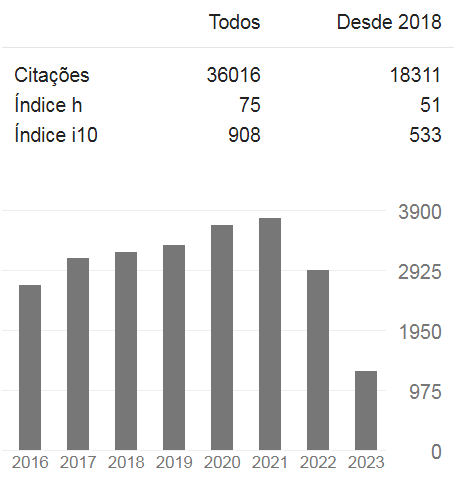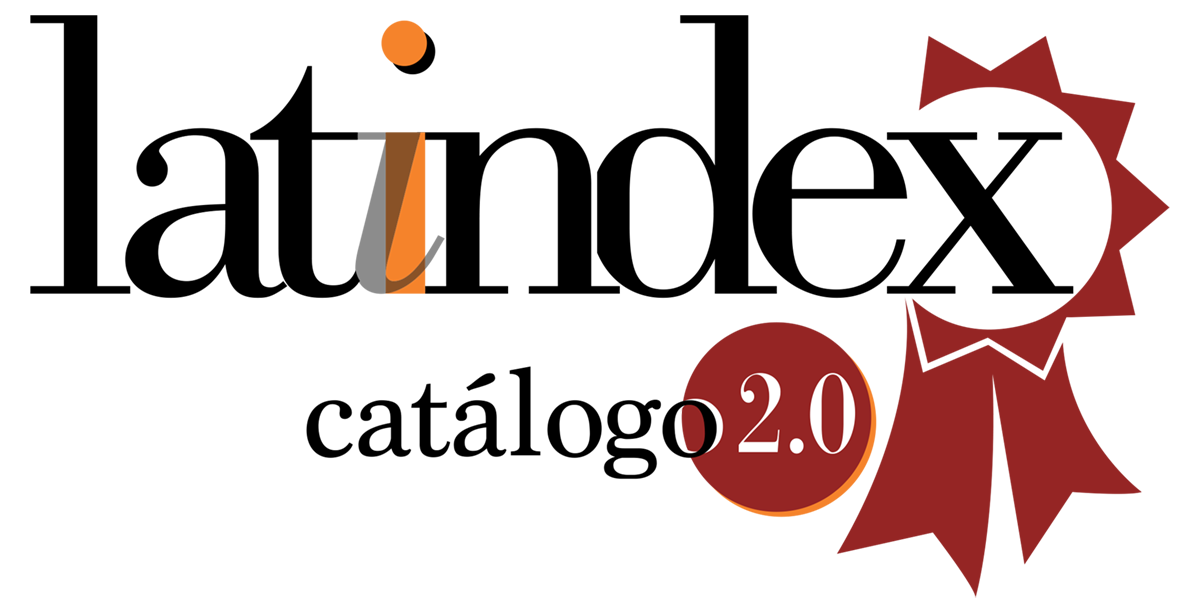Prevalence and clustering of cardiometabolic risk factors in the elderly population living in rural areas
DOI:
https://doi.org/10.35699/reme.v18i4.50128Keywords:
Cardiovascular Diseases, Aged, Rural Population, Health of the ElderlyAbstract
This study assessed the prevalence and clustering of risk factors for cardiovascular diseases in the elderly population of rural areas. This cross-sectional study was performed with 236 individuals, aged between 60 and 99 years, residents in a rural area. The factors analyzed were: overweight (BMI > 27 kg/m²), abdominal obesity (waist circumference > 88 cm for women and > 102 for men), total cholesterol > 200 mg/dL, triglycerides > 150 mg/dL, LDL cholesterol > 160 mg/dL, HDL cholesterol < 40 mg/dL for men and < 50 mg/dL for women, blood glucose > 100 mg/dL, systolic/diastolic blood pressure > 140/90 mmHg, smoking, metabolic syndrome defined according to criteria from the National Cholesterol Education Program, and bad diet score. Ratios of prevalence (PR) and 95% confidence intervals (IC95%) were calculated according to sex. Agglomeration of four or more risk factors was observed in 47.4% of the population. Women showed high prevalence of overweight (PR = 1.9; IC95% = 1.05-3.61), abdominal obesity (PR = 3.1; IC95% = 1.80-5.50), increased LDL cholesterol (PR = 2.4; IC95% = 1.31-4.21), metabolic syndrome (PR = 2.2; IC95% = 1.25 -3.84), hypercholesterolemia (PR = 1.3; IC95% = 1.06-1.68), and dyslipidemia (PR = 1.1; IC95% = 1.01-1.29) when compared to men. This study confirms the high prevalence of cardiovascular risk factors in the elderly population and the need for effective public policies for prevention, aiming at healthy aging.References
Closs VE, Schwanke CHA. A evolução do índice de envelhecimento no Brasil,
nas suas regiões e unidades federativas no período de 1970 a 2010. Rev Bras
Geriatr Gerontol. 2012; 15(3):443-58.
Institute for Health Metrics and Evaluation (IHME). Global Burden of Disease
(GBD) Profile: Brazil. Seattle, WA: IHME; 2013. [Citado em 2014 ago. 20]. Disponível
em: http://www.healthmetricsandevaluation.org/gbd/country-profiles.
Papaléo Neto M, Borgonovi N. Biologia e teorias do envelhecimento. In:
Papaléo Neto M. Gerontologia: a velhice e o envelhecimento em visão
globalizada. 2ª ed. São Paulo: Atheneu; 2002. p.44-59.
Ferreira CCC, Peixoto MRG, Barbosa MA, Silveira EA. Prevalência de fatores
de risco cardiovascular em idosos usuários do Sistema Único de Saúde de
Goiânia. Arq Bras Cardiol. 2010; 95(5): 621-8.
Yusuf HR, Giles WH, Croft JB, Anda RF, Casper ML. Impact of multiple risk factor
profiles on determining cardiovascular disease risk. Prev Med. 1998; 27 (1):1-9.
Brasil. Ministério da Saúde. IDB 2003 BRASIL. Rede Interagencial de
Informações para a Saúde (RIPSA). [Citado 2014 ago. 20]. Disponível em
http://tabnet.datasus.gov.br/cgi/deftohtm.exe?idb2003/c08.def .
Schmidt MT, Duncan BB, Silva GA, Menezes AM, Monteiro CA, Barreto SM,
et al. Doenças crônicas não transmissíveis no Brasil: carga e desafios atuais.
Lancet. 2011; 377(9781):1949-61.
Kassouf AL. Acesso aos serviços de saúde nas áreas urbana e rural do Brasil.
Rev Econ Sociol Rural. 2005; 43(1):29-44.
Bicalho PG, Felisbino-Mendes MS, Horta TG, Gazzinelli A, VelásquezMeléndez G. A pesquisa de campo na área da epidemiologia das doenças e
agravos não transmissíveis: uma experiência em área rural da região do Vale
do Jequitinhonha, Minas Gerais. REME - Rev Min Enferm. 2011; 15:612-6.
World Health Organization. Physical Status: the use and interpretation of
anthropometry. Geneva: World Health Organization; 1995. Technical Report
Series, n. 854;
Chobanian AV, Bakris GL, Black HR, Cushman WC, Green LA, Izzo JL. The seventh
report of the Joint National Committee on Prevention, Detection, Evaluation,
and Treatment of High Blood Pressure. JAMA. 2003; 289(19):2560-72.
Lipschtz DA. Screening for nutritional status in the elderly. Nutrit Old Age.
; 21(1):55-67.
Expert Panel on Detection, Evaluation, and Treatment of High Blood
Cholesterol in Adults. Executive Summary of The Third Report of The
National Cholesterol Education Program (NCEP) Expert Panel on Detection,
Evaluation, and Treatment of High Blood Cholesterol In Adults (Adult
Treatment Panel III). JAMA. 2001; 285:2486-97.
Sposito AC, Caramelli B, Fonseca FA, Bertolami MC, Afiune Neto A, Souza
AD, et al. IV Brazilian Guideline for Dyslipidemia and Atherosclerosis
prevention: Department of Atherosclerosis of Brazilian Society of Cardiology.
Arq Bras Cardiol. 2007; 88(Suppl 1):2-19.
Grundy SM, Cleeman JI, Daniels SR, Donato KA, Eckel RH, Franklin BA, et al.
Diagnosis and management of the metabolic syndrome: an American Heart
Association/National Heart, Lung, and Blood Institute Scientific Statement.
Circulation. 2005; 112: 2735-52.
Felisbino-Mendes MS, Gomes CS, Jansen AK, Velasquez-Melendez G.
Avaliação dos fatores de risco cardiovasculares em uma população rural
brasileira. Cad Saúde Pública. 2014; 30:1183-94.
Pereira JC, Barreto SM, Passos VMA. O perfil de saúde cardiovascular dos
idosos brasileiros precisa melhorar: estudo de base populacional. Arq Bras
Cardiol. 2008; 91(1):1-10.
Freitas MPD. Birth cohort differences in cardiovascular risk factors in a
Brazilian population of older elderly: the Bambuí Cohort Study of Aging
(1997 and 2008). Cad Saúde Pública. 2011; 27(Supl 3):S409-S417.
Travassos C, Viacava F. Acesso e uso de serviços de saúde em idosos residentes
em áreas rurais, Brasil, 1998 e 2003. Cad Saúde Pública. 2007; 23(10):2490-502.
Fernandes MTO, Soares, SM. O desenvolvimento de políticas públicas de
atenção ao idoso no Brasil. Rev Esc Enferm USP. 2012; 6:1494-502.
Brasil. Ministério da Saúde. Secretaria de Vigilância em Saúde. Departamento
de Análise de Situação de Saúde. Coordenação Geral de Doenças e Agravos
Não Transmissíveis. Plano de Ações estratégicas para Enfrentamento das
DCNT no Brasil 2011-2022. Brasília: Ministério da Saúde; 2011.
Tavassoli AA, Gharipour M, Khosravi A, Kelishadi R, Siadat ZD, Bahonar
A, et al. Gender Differences in obesogenic behaviour, socioeconomic and
metabolic factors in a population-based sample of iranians: the IHHP study.
J Health Popul Nutr. 2010; 28(6):602-9.
Velásquez-Meléndez G, Gazzinelli A, Côrrea-Oliveira R, Pimenta AM, Kac G.
Prevalence of metabolic syndrome in a rural area of Brazil. Sao Paulo Med J.
; 125(3):155-62.
World Bank. Population aging: is Latin America ready? Directions in
development. Washington DC: World Bank; 2011.
Barreto SM, Giatti L, Kalache A. Gender inequalities in health among older
Brazilian adults. Rev Panam Salud Publica. 2004; 16(2):110-7.
Downloads
Published
Issue
Section
License
Copyright (c) 2014 Reme: Revista Mineira de Enfermagem

This work is licensed under a Creative Commons Attribution 4.0 International License.






































